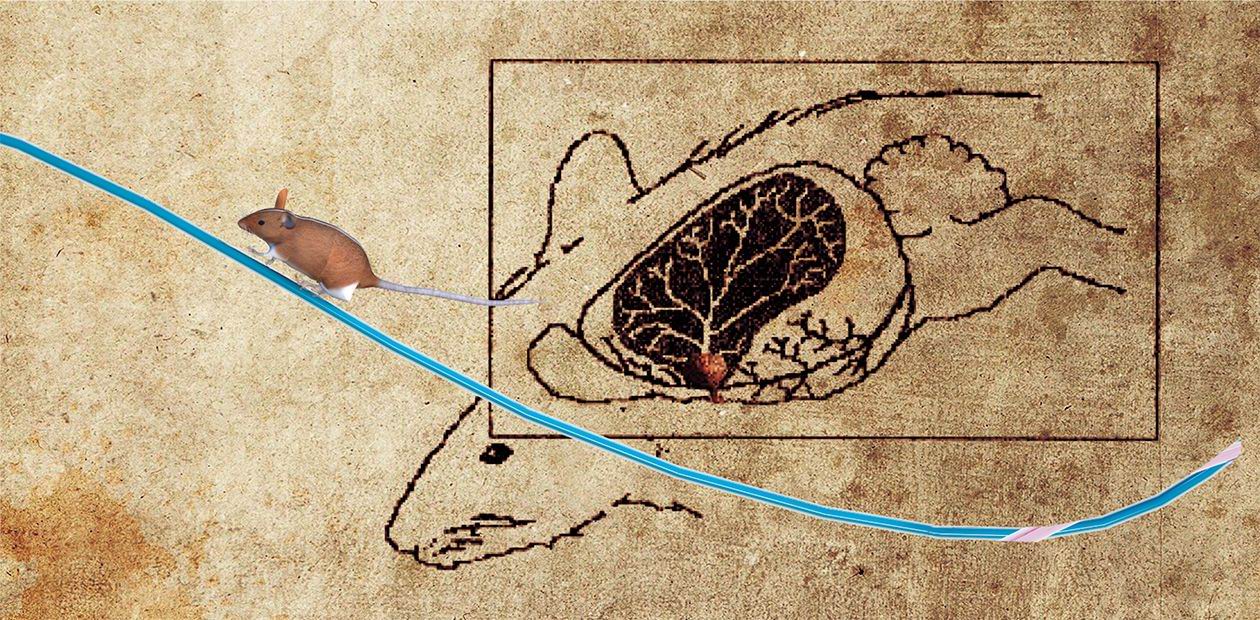The Postgenomic Era. Selection of Hypertensives
The hypertensive NISAG (ISIAH) strain rats with a stress-sensitive arterial hypertension have been produced through a long-term selection for the level of arterial pressure under conditions of mild emotional stress (Markel, 1985, 1991). Study of the reasons as well as genetic and physiological mechanisms underlying the development of stress-dependent arterial hypertension have demonstrated that the NISAG rats actually display a genetically determined increase in the sensitivity to stress factors, which appears, first and foremost, as a development of stable hypertensive status. With a decreased response threshold to external stimulation, the arterial pressure can increase under routine “normal” conditions. A byword by Hans Selye, the father of the theory of stress, that “life is stress and stress is life”, precisely fits the description of such a situation.
Many researchers indicate stress as a factor provoking development of hypertension in humans. Here both preconditions are important—genetic predisposition to elevated stress response and an ever increasing stress pressure in human populations of industrial countries with their high urban population density and excess competition.
As it has been demonstrated, the mechanisms involved in development of arterial hypertension in NISAG rats adequately reflect the pathogenesis of human hypertension in urban populations. This fit was observed not only at the level of neuroendocrine and morphophysiological responses, but also in the behavioral patterns (high motivation to compete for “life’s comforts,” elevated aggressiveness, and increased exploratory activity).
This close similarity between our experimental model for hypertension and the corresponding human pathology allows the NISAG rats to be used not only for studying the mechanisms involved in development of hypertensive states, but also in the search for and testing of new drugs for prevention and treatment of hypertension and its complications. It is known that a severe complication of hypertension is brain stroke.
It has been found that the NISAG rats are very sensitive to any impairments of the cerebral blood circulation. Even a weak deficiency in blood supply to certain brain regions can lead NISAG rats to an extensive brain stroke and even a lethal outcome. This made NISAG strain an indispensable experimental model in the search for pharmacological preparations to control brain stroke.
This fact initiated a fruitful international collaboration. The pharmaceutical company D-Pharm (Rehovot, Israel), specializing in the design of antistroke drugs, asked us to test their new preparation using the stroke model of NISAG rats.
Extensive experimental work performed at several laboratories of the Institute of Cytology and Genetics confirmed the efficiency of the new drug (draft name, DP-b99). These results allowed the new preparation to be conveyed to clinical trials. The following results were announced in the press release of January 03, 2007: “A Phase IIb trial to assess DP-b99’s effect on stroke outcomes was completed. The study enrolled 150 ischemic stroke patients with signs of cortical involvement and NIH (USA) Stroke Scale score of 7—20. The patients were at 27 clinics of Germany, South Africa, and Israel. The recovery rate in the DP-b99 treated group was twofold higher than in the placebo group.”
Thus, the new model for arterial hypertension created at the Institute of Cytology and Genetics has really contributed to practical medicine. It was experiments with NISAG rats that gave the green light to subsequent clinical trials, which were very successful. Millions of patients are waiting for new efficient drugs that would allow us to control a dreadful (and frequently lethal) complication of hypertension, brain stroke.





